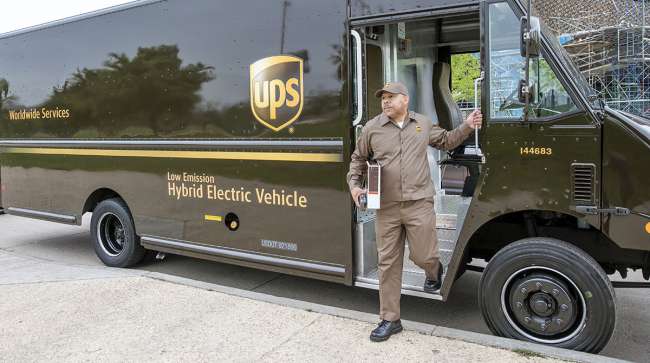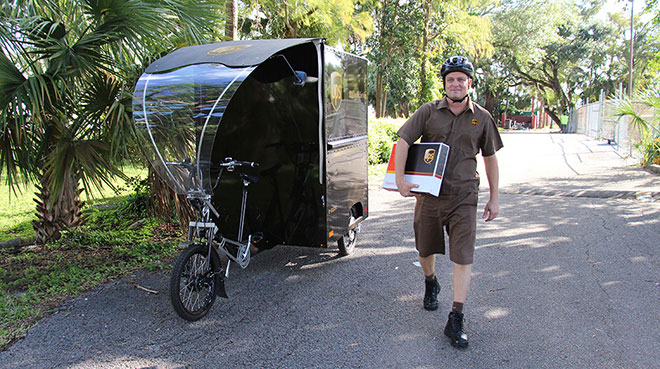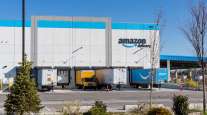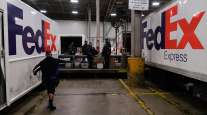Solving the ‘Final 50 Feet’ Delivery Challenge

WASHINGTON — Researchers are joining major retailers, logistics firms, city transportation offices and others in the freight industry to reconsider last-mile delivery systems, even reviewing the way they get packages the “final 50 feet” in congested urban downtowns.
These parties are searching for new approaches as cities become more crowded, traffic slows and consumers demand faster delivery of their e-commerce purchases. Officials discussed the issue Jan. 8 during the Transportation Research Board’s annual meeting, at the session “E-Commerce May Double the Number of City Truck Trips by 2022: How to Create a Truck Load–Unload Space Network to Efficiently and Safely Deliver Goods.”
Delivery giant UPS Inc., which ranks No. 1 on Transport Topics Top 100 list of the largest for-hire carriers in North America, is testing new methods. It has teamed with researchers at the University of Washington’s Urban Freight Lab, which is focusing on supply chain logistics and current practices in urban delivery.
UPS Director of Urban Innovation Thomas Madrecki said it is looking at solutions for individual communities and other geographic areas. For example, it is using an e-trike — an electric-powered three-wheel bike — for delivery in Fort Lauderdale, Fla., Pittsburgh and Portland, Ore.

UPS Inc.
“These can be economically feasible in some historic neighborhoods in the U.S. We’re thinking about removing trucks and replacing them with other vehicles, depending on the neighborhood,” Madrecki said. “Other new technology includes drones for rural areas while trucks remain ideal for many places.”
UPS also shared some of its delivery data with Georgetown University as the school and the District Department of Transportation studied deliveries in three busy neighborhoods.
The giant growth in curbside use by delivery firms was one reason Washington modernized its loading zones. It built a street space database, integrated freight and loading data in its transportation system and launched coded loading zone signs that allow for payment via smart phone, said Laura Richards, a Washington city freight planner.
In Seattle, the Urban Freight Lab was created in 2016 to improve the public and private operations of urban delivery systems through strategic research. Aside from UPS, founding members include Charlie’s Produce, a regional distribution firm, retailers Costco and Nordstrom, and the U.S. Postal Service.
The growth in e-commerce means “curb space is becoming a priceless resource,” said Barbara Ivanov, the lab’s director.
“The final 50 feet of urban delivery begins at a city-owned commercial vehicle loading zone or alley, or at the loading dock or zone at a privately owned building. It ends where the owner takes delivery of goods,” Ivanov said. “It incorporates the vertical elements of a building. It starts at the sidewalk and goes up a 70-story tower.”
Big picture, the lab seeks to lower costs for retail and logistics firms, find the most efficient use of loading and unloading space, grow street space capacity and find more room in alleys for vehicles.
One strategic part is reducing the number of failed first deliveries by delivery firms, Ivanov said. A failed delivery means the driver circles and returns for a second or third try, causing more congestion.
The lab also has some ideas on cutting the dwell time in an office building for delivery staff. For instance, Ivanov said, how about automating the security system so the driver isn’t stuck waiting at a desk, adding faster elevators and creating a node distribution system, where goods are dropped off in a locker-type area?
Blocked curbs was an incentive for Seattle to get involved, said Chris Eaves of the city’s transportation department. It wants to make deliveries more efficient, both to better serve businesses but also because roads can be impassable.
Seattle has trouble enforcing its 30-minute limit on the use of a loading zone because there are many more deliveries today and they typically take longer than the limit, Eaves said.
“That means we have to find other ways to change [driver] behavior,” Eaves said.




